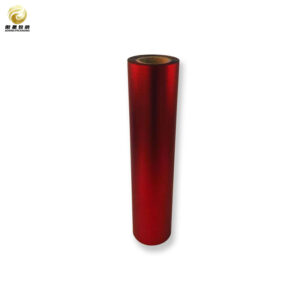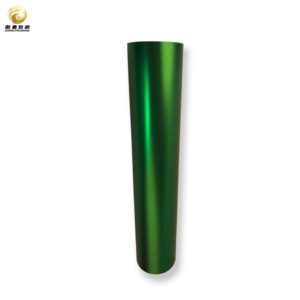Metalized plastic film
| Product | PET Metallized Film |
| Material | PET + color+ aluminum layer / PET + aluminum + color layer |
| Thickness | 12~188um |
| Color Option | Red,Blue,Purple,Green,Gold,Yellow,Rose,Rainbow,etc. |
| Width & Length | Width:500~1800mm Length:Customized |
Detailed Descriptions
Product Description: Metalized Plastic Film
Introducing our premium Metalized Plastic Film, a versatile and innovative solution designed to meet the diverse needs of various industries. This high-performance film combines the lightweight properties of plastic with the reflective qualities of metal, resulting in a product that excels in both functionality and aesthetics.
Key Features:
1. Superior Barrier Properties: Our Metalized Plastic Film offers exceptional barrier protection against moisture, oxygen, and light. This makes it an ideal choice for packaging applications where product integrity is paramount, such as food preservation, pharmaceuticals, and electronics.
2. Enhanced Aesthetic Appeal: The metallic finish of our film not only provides a striking visual impact but also enhances branding opportunities. Its reflective surface can elevate product presentation, making it an excellent choice for retail packaging and promotional materials.
3. Lightweight and Flexible: Despite its robust barrier capabilities, our Metalized Plastic Film remains lightweight and flexible. This characteristic allows for easy handling and application across various formats, including pouches, wraps, and labels.
4. Thermal Stability: Engineered to withstand a wide range of temperatures, our film maintains its integrity in both hot and cold environments. This thermal stability ensures that your products remain protected regardless of storage conditions.
5. Eco-Friendly Options Available: We are committed to sustainability. Our Metalized Plastic Film is available in eco-friendly variants that utilize recyclable materials without compromising performance. This allows businesses to align their packaging solutions with environmentally responsible practices.
6. Customizable Solutions: Understanding that every application is unique, we offer customizable options tailored to your specific requirements. Whether you need varying thicknesses, widths, or finishes, our team is ready to collaborate with you to create the perfect solution.
7. Applications Across Industries: Our Metalized Plastic Film is suitable for a wide range of applications including food packaging (snack foods, confectionery), medical supplies (blister packs), electronics (protective wraps), and decorative uses (gift wrapping). Its versatility makes it an indispensable material across multiple sectors.
8. Durability and Strength: Designed for longevity, our film exhibits excellent tensile strength and puncture resistance. This durability ensures that your products are safeguarded during transportation and storage while maintaining their visual appeal.
9. Easy Printing Capabilities: The surface of our Metalized Plastic Film is optimized for printing processes such as flexography and rotogravure. This feature allows for high-quality graphics and branding elements to be seamlessly integrated into your packaging design.
10. Compliance with Industry Standards: Our Metalized Plastic Film adheres to stringent industry regulations and standards, ensuring safety and reliability in all applications. We prioritize quality control throughout the manufacturing process to deliver a product you can trust.
As a reputable manufacturer, we understand the importance of quality and reliability. Our Metalized Plastic Film undergoes rigorous testing to ensure it meets international standards, providing our clients with peace of mind when they choose us as their trusted supplier. We cater to businesses looking to bulk buy this product at competitive wholesale rates, allowing you to maximize your operational efficiency while minimizing costs.
Our commitment to excellence extends beyond just manufacturing; we are also a prominent exporter of Metalized Plastic Film. We serve clients across the globe, ensuring timely delivery and adherence to the highest quality standards. Whether you are looking for custom solutions or standard products, our OEM services are tailored to meet your specific requirements.
By choosing our Metalized Plastic Film, you benefit from bulk pricing options that make it easier for businesses of all sizes to access high-quality materials without compromising on budget. Our dedicated team is here to assist you with any inquiries regarding bulk orders or specific product specifications.
In summary, if you are seeking a reliable partner for your Metalized Plastic Film needs, look no further than our factory in China. As an established producer and supplier with extensive experience in the industry, we are well-equipped to support your business with top-tier products at competitive prices. Contact us today to learn more about how we can fulfill your requirements efficiently and effectively.







